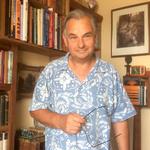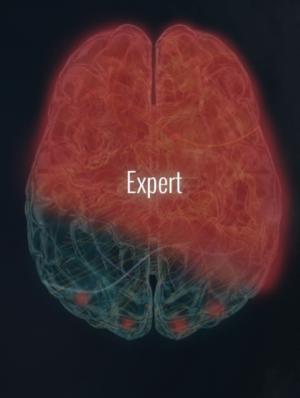It’s a commonplace of contemporary competitive sport that the mental game is as important as the physical game. Poker is a card game that has made the transition from recreational pursuit to professional competition, it has become a spectator sport and for the top professionals a lucrative career.
 So what distinguishes the amateur from the professional? A study by partypoker set out to answer the question. Six players, two beginners, two intermediate and two experts were observed playing forty minute sessions of Texas Hold’em poker. All the participants wore electroencephalography (EEG) headsets by Emotiv and the data was then converted to colour coded brain maps. The brain activity of amateurs and experts were then compared at key stages of the game.
So what distinguishes the amateur from the professional? A study by partypoker set out to answer the question. Six players, two beginners, two intermediate and two experts were observed playing forty minute sessions of Texas Hold’em poker. All the participants wore electroencephalography (EEG) headsets by Emotiv and the data was then converted to colour coded brain maps. The brain activity of amateurs and experts were then compared at key stages of the game.
Deal
When cards are initially dealt is when the amateur is most focussed and their decision making is led by logic. The experienced players, however, are making less mental effort but reaching quicker decisions.
Flop
This is when the first three cards are put out face up, altogether. The amateurs exhibited minimal brain activity but this is the stage of the game at which the experts were most engaged and they spent far more time than the amateurs processing information.
Turn
When the fourth card is dealt, face up, amateurs responded with emotional decision making, whilst the decisions of the experts were dictated by logic and intuition. The brain maps show increased activity in the front right side of the brain for the amateur (an area associated with emotion), but an increase in both sides of the brain for the expert (associated with solving mathematical problems).
River card
A key phase of the game when the fifth card is dealt, face up. Again, brain maps show a striking distinction between the amateur, whose decisions are the result of intuition and the expert, whose decisions are dictated by logic.
Check
This is the decision to not bet, with the option to call or raise later in the round. It is a meditative phase of the game, but where the amateur is passive and disengaged, the expert brain is engaged in logical, critical thinking, highlighted by the increased activity in the left side of the brain.
Raise
Excitement peaks when stakes are raised but whilst the brains of both amateurs and experts show heightened alertness, the amateur brain reveals much higher levels of emotion.
Call
This is where a player puts into the pot an amount of money equal to the most recent bet. It is a more relaxed phase of the game than the raise but once again the brain maps of the experts suggest a much lower level of emotional activity compared to the amateurs.
All in
Running out of chips while betting or calling is a crucial moment for a player and the brain maps for both amateur and expert are very similar, indicating high levels of engagement and increased emotional activity.
Conclusions
Sports psychologists characterise emotion style in a variety of ways. At one end of the spectrum is ‘the seether’, a player whose anger and frustration bubble beneath the surface and threaten to disrupt the quality of the performance. At the other end ‘the Zen master’, a player unperturbed by the vagaries of play and consequently always able to perform at the highest level. The findings of the partypoker study would support this model of emotions. Expert players did not dwell on bad hands and were led by intuition and logic, over emotion. They demonstrated consistent engagement, self-control and patience, they were not distracted by emotion, frustration or excitement.
Photo Credits
Emotiv headset – from Emotiv
Brains – from partypoker
Contributing Author Bio
Richard Sheppard
 Richard is a film, travel and literature enthusiast and freelance writer who has written for a range of online publications.
Richard is a film, travel and literature enthusiast and freelance writer who has written for a range of online publications.






Please Share Your Thoughts - Leave A Comment!